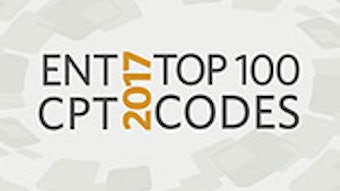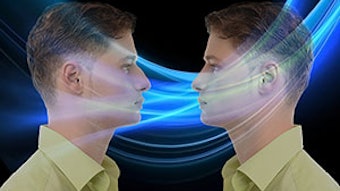Academy updates CPT for ENT articles
As part of a process to continue to provide the most up-to-date resources for our membership, Academy Current Procedural Terminology (CPT) experts have begun to re-evaluate and update the Academy’s list of CPT for ENT articles.

CPT for ENT articles are a collaborative effort among the Academy’s team of CPT advisors, members of the Physician Payment Policy (3P) Workgroup, and health policy staff. Articles are developed to address common coding questions received by this health policy team as well as to clarify coding changes and correct coding principles for frequently reported otolaryngology-head and neck surgery procedures. These updated articles help the Academy to provide Members with the latest coding resources.
The recently updated CPT for ENT articles are “Saccadic Testing during ENG” and “Eagle’s Syndrome.”
All updated CPT for ENT articles can be found at www.entnet.org/content/cpt-ents as part of the Academy’s Coding Corner.
In addition to CPT for ENT articles, the Academy’s Coding Corner offers access to relevant American Medical Association (AMA) CPT Assistant articles, annual code change summaries, template appeal letters, ICD-10 coding resources, and information on Centers for Medicare & Medicaid Services (CMS) quality initiatives and reporting programs.
All of these resources can be found at the Academy’s Coding Corner (www.entnet.org/content/coding-corner).
CPT for ENT: Electro-oculography
Q: Can otolaryngologists report the CPT code 92270 (electro-oculography with interpretation and report) to indicate saccadic testing during an electronystagmography/videonystagmography (ENG/VNG) procedure?
A: No. It has come to the Academy’s attention that otolaryngologists are reporting CPT code 92270 Electro- oculography with interpretation and report to describe saccadic testing during an ENG or VNG procedure. To follow the American Medical Association’s Current Procedural Terminology (CPT®) guidelines, providers should only use this code to document a standard test of the electrical potential created in a retina when exposed to light for the diagnosing of best vitelliform maculopathy.
As a result, otolaryngologists and their practices should not report CPT code 92270 with ENG/VNG testing (CPT codes 92541-92547, Vestibular Functions Tests, With Recording).
To ensure optimal reimbursement for any services rendered, remember to submit detailed clinical documentation that supports the physician’s treatment rationale.
Approved June 2008
Revised November 2016
CPT for ENT: Eagle’s Syndrome
Q: How do I code for Eagle’s Syndrome and its treatment?
A: Eagle’s Syndrome is a condition caused by an elongated styloid process or calcified stylohyoid ligament. Symptoms may include dull pain of the throat, neck and face, dysphagia, and foreign body sensation of the throat. Treatment of this syndrome is usually done by surgically shortening the styloid process (typically transorally) and/or addressing the calcified ligament, if needed, (typically with a cervical approach).
As there is no specific ICD-9 code for the syndrome, it is best to code for symptoms presented by the patient. They are typically facial pain (784.0), throat pain (784.1), neck pain (723.1), and dysphasia (784.5). Other options may include other disorders of muscle, ligament, and fascia (728.89).
Suggested crosswalk to ICD-10 codes:
784.0 → G50.1 (atypical facial pain)
784.1 → R07.0 (pain in throat)
723.1 → M54.2 (cervicalgia)
784.5 → R13.19 (other dysphagia)
728.89 → M62.89 (other specified disorders of muscle)
Another potential option is M89.8X8 (other specific disorders of bone, unspecified site). When coding for shortening of the styloid process use CPT code 21499 Unlisted musculoskeletal procedure, head. Make sure your operative note clearly details the procedure performed.
Reviewed 8/4/06
Revised November 2016
Important Disclaimer Notice (Updated Aug. 7, 2014)
CPT for ENT articles are a collaborative effort between the Academy’s team of CPT Advisors, members of the Physician Payment Policy (3P) workgroup, and health policy staff. Articles are developed to address common coding questions received by the health policy team, as well as to clarify coding changes and correct coding principles for frequently reported ENT procedures. These articles are not intended as legal, medical, or business advice and are not a guarantee of reimbursement. The information is also not meant to serve as the definitive or sole authority on billing and coding issues. The applicability of AAO-HNS billing and coding guidance for a particular procedure, must be determined by the responsible physician in light of all the circumstances presented by the individual patient. You should consult with your own advisors as well as Medicare or private carriers in making any decisions about how to bill and code particular services or procedures.

















